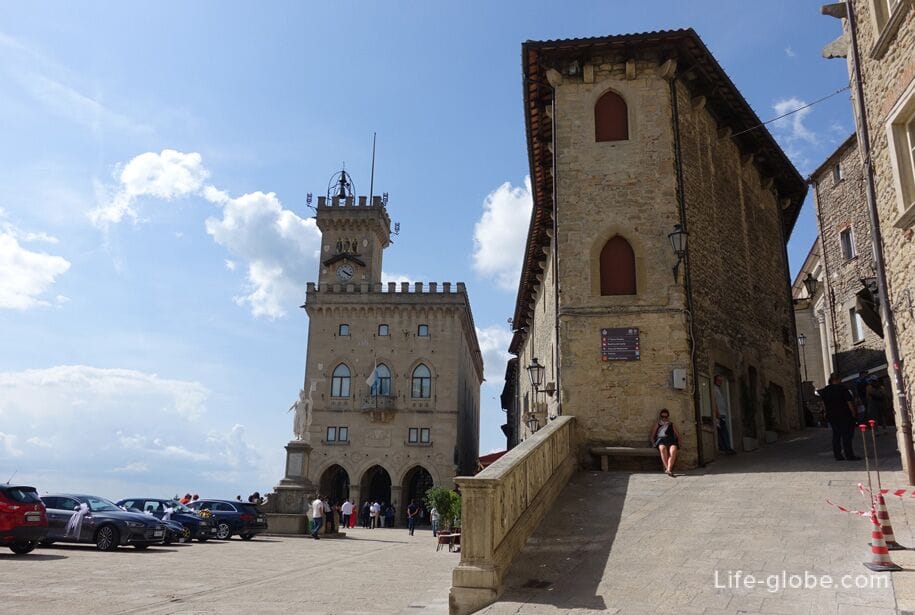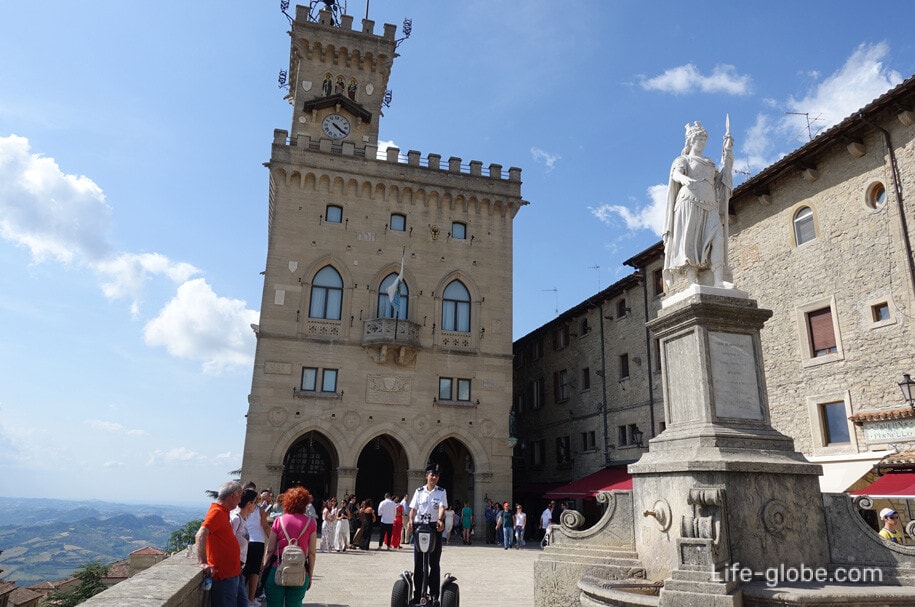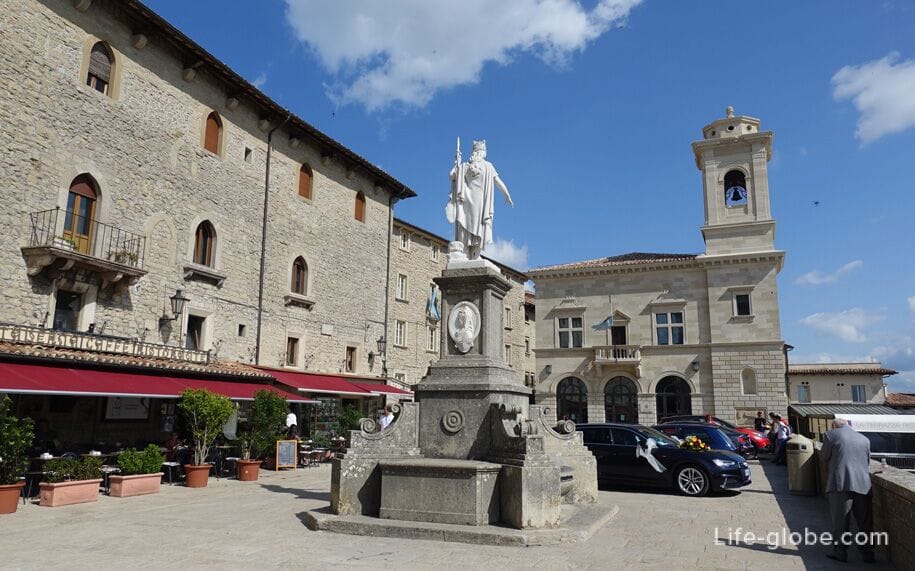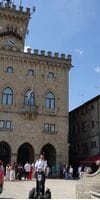The Palazzo Publico or Public Palace, also known as people's Palace (Palazzo Pubblico) is the town hall of San Marino, and an official government building, located in the historic centre of San Marino at Monte Titano on the so-called "pianello" - main square of San Marino - Liberty square or the Piazza della libertà (Piazza della Liberta).
The building of the Palace is probably one of the finest and most attractive in San Marino.
In the building, where official state ceremonies are also the main institutional and administrative bodies of the Republic: the captains Regent, the Great and General councils, the Council of XII, and the Congress of State.
The Palazzo Publico is a place of ancient buildings called the Great communal house (Domus Magna Comunis), built between 1380 and 1392 years and repaired several times.
May 17, 1884, was laid the first stone of the present building Publico project of the Roman architect Francesco Azzurri, President of the Academy San Luca in Rome. The work was carried out by local masons under the direction of the master Builder of San Marino Giuseppe Reffi using stones mined in the quarries of Titanium.
The inauguration took place September 30, 1894, the ceremony speaker was giosuè Carducci who on this occasion delivered a famous speech about the "Eternal freedom".
Later the Palace was rebuilt by the famous architect Gae Aulenti, since ceased to meet the standards of safety and in order to adapt the Palace to the new requirements of functionality. The Grand opening took place on 30 September 1996.
The facade is richly decorated with numerous symbols: coat of arms of the Republic and four cities, castles Republic: Serravalle, Fiorentino, Montegiardino and Faetano, and teeth in its upper part. In addition, on the facade of the Palace you can see the coats of arms of towns, purchased by the Republic for centuries.
In the lower part of the main facade of the Palace has three arches. In the centre is dominated by a polygonal balcony with two decorated Windows on the sides. Just below the balcony, between the two small Windows of the mezzanine, placed the coat of arms of the Republic.
On the left is a crenelated tower, which depicts Sant'agata, San Marino and San Leo. Under the image are hours.
On the right corner, on the mezzanine level, there is a bronze statue of the Saint. Under the portico, to the right is a marble bust of the architect, Azzurri, Giulio Tadolini.

In front of the main facade of the Palazzo Publico is the statue of Liberty or della libertà (Statua della Liberta), which is the decoration of the whole of Liberty square.
The statue placed on a high pedestal, made in the neoclassical style from white Carrara marble. The work of sculptor Stefano Galletti, which was donated by Countess Otilia Heyroth Wagener from Berlin Republic in 1876.
The statue symbolizes freedom. Freedom is represented as a warrior, moving forward with one outstretched hand, while in the other soldier holding the flag. The head of the statue is a crown with three towers representing the fortified city of San Marino, the symbolic significance of restoring freedom.
Statue della libertà is depicted in sanmarina coins 2 Cents 2002-2016 years of release.

Inside the walls of the Public Palace is covered with trophies, inscriptions, coats of arms, friezes, busts of famous people, including from San Marino (among which is Carducci).
A treasure that the walls of the Palace was guarded for centuries, is the Council Hall, located on the top floor, which is accessed via an impressive staircase. On the wall in the back of the room is a picture of the Holy founder of the Republic, surrounded by his loyal people. Peasants, soldiers, educated men, women and children listen St Marino, while he warns them "Relinquos vos liberos ab utroque nomine" ("I leave you free from both men", referring to the figures of Pope and Emperor).

The Palace also includes: Congress halls, halls for spectators and a hall vote, which overlooks the area where the spiral staircase onto the terrace and the tower of the Palazzo.
The entrance to the Palace is paid.
In Liberty square are also ancient cistern for collecting rainwater, which was once used as a reservoir for the residents of San Marino.
And opposite the Palazzo is the former building of the post office, rebuilt in the style of the 16th century on the foundations of the Parva Domus of the municipality of the 14th century.

All accommodation in San Marino, you can view and book here








